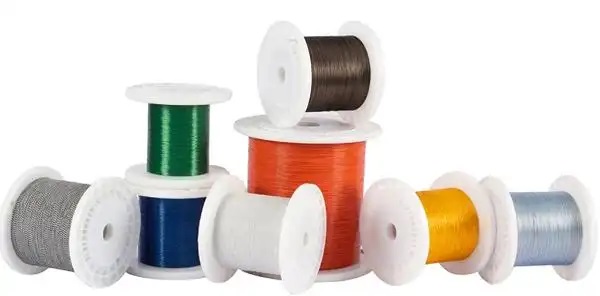In applications such as precision electronic equipment, miniaturized medical devices, and high-speed signal transmission, ultra-fine coaxial cables (Micro Coaxial Cable) have gradually become the preferred solution for internal signal bundles in high-end products due to their excellent shielding performance, anti-interference ability, and thin, soft structure. However, in the actual customization process, customers often do not know which technical parameters and documents need to be prepared in advance, leading to increased communication costs, extended sample cycles, and even delays in mass production. This article will analyze in detail: What key elements should be prepared in advance when customizing ultra-fine coaxial cables?

What is Micro Coaxial Cable?
Extreme fine coaxial cable is a miniature coaxial cable composed of a core conductor, an insulating layer, a woven shielding layer, and an outer sheath in a concentric structure. Its diameter usually ranges from 0.3mm to 1.2mm and has the following characteristics:
Applicable to high-frequency signal transmission
Strong anti-interference ability
Soft and easily bendable
Widely used in the following fields:
Internal connections of medical endoscopes, camera modules, drones, precision instrument signal lines, laptops, tablets, and smartphones, etc.

What information should be prepared before customizing extremely thin coaxial cable assemblies?
To design and produce ultra-fine coaxial cable assemblies that meet the performance and structural requirements, it is recommended to confirm the following seven core parameters in advance:
Cable model and specifications
Determine the required ultra-fine coaxial cable model, such as AWG36, AWG40, AWG42, or specify a brand like SUMITOMO, HITACHI, TATSUTA. Different models will affect the wire diameter, conductor material, shielding structure, and signal frequency performance.
Suggestion provided:
Specific model or wire diameter range
Have you specified a brand?
Do you accept the domestic substitution plan?
Cable length
Define the finished length and tolerance requirements for each harness line.
Suggestion provided:
Single length (e.g., 120mm ± 3mm)
Does it include the connector within the measured length?
Connector brand and model
The ends of extremely thin coaxial cable bundles are usually equipped with connectors (Connector), including brands such as I-PEX, JAE, Hirose, KEL, HTK, etc. The pin spacing, termination method, and processing requirements of different connectors vary, and they need to be confirmed in advance.
Suggestion provided:
• Connector brand and model (e.g., I-PEX 20373-040T, Hirose DF36-20S-0.4V)
Are both ends the same model?
Provide 3D drawings or physical samples if it is non-standard or customized.
4. Conduction sequence and PIN definition
The multi-core harness must clearly define the signal order and pin definitions; otherwise, it may cause signal errors or functional anomalies.
Suggestion provided:
Line diagram, 3D structure diagram, or simple illustration
5. Environmental and Performance Requirements
Set performance indicators based on the application environment, including:
• Temperature resistance level (e.g., 80℃、105℃)
Bend life (e.g., >100,000 times)
Impedance matching (common: 50Ω / 75Ω)
Signal Frequency Range (e.g., 0–6GHz)
Suggestion provided:
Product Application (e.g., medical endoscope signal line)
Special performance requirements or test standards
6. Detection Standards and Quality Requirements
Determine whether the product needs to comply with RoHS and REACH environmental certifications, and list the test items.
Suggestion provided:
• Conductivity test, high-voltage test, shielding integrity test, and other lists
• Delivery Inspection Standards
Packaging method and packaging materials
The ultra-fine coaxial cable bundle structure is precise, and it is easy to cause appearance deformation and performance damage if not packaged properly during transportation or storage.
Suggestion provided:
• Packaging methods: bulk, tape-bound, tray-packed, blister packs, pallets, etc.
Packaging materials: OPP bags, self-seal bags, bubble bags, anti-static bags, paper box lining pearl cotton, etc.
• Quantity and labels: quantity per package, outer case size, net weight/gross weight, label position and content

Extremely thin coaxial cable bundles are small in size, yet they require high precision in parameters and assembly technology. If customers can provide the above information and sample materials in full before customization, it will greatly improve the efficiency of engineering evaluation, ensuring smooth and stable sampling and mass production processes, as well as controllable delivery time.
I am Kunshan JieKangFu Precision Electronics, long-term focused on the design and customization of high-speed signal cables and ultra-fine coaxial cables, committed to providing stable and reliable high-speed interconnect solutions. If you have any related needs or want to learn more, please contact: Manager Yin.
18913280527 (WeChat number). 

